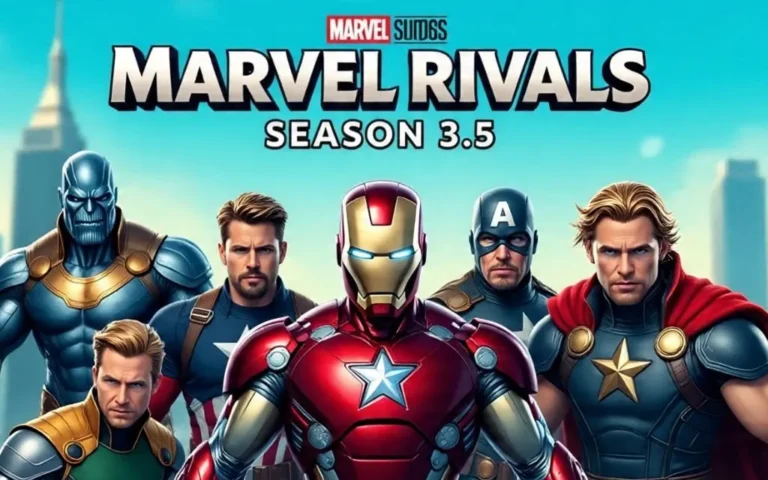Wordle Hint: 10 Powerful Strategies to Instantly Boost Your Game
Meta Description
wordle hint methods and expert strategies to improve your guesses, sharpen your approach, and dominate your daily Wordle challenges with ease.
Introduction
There is something deeply satisfying about opening your browser, pulling up the day’s Wordle, and getting the answer in just a few guesses. But for many players, that success can feel inconsistent. The truth is that every strong Wordle player relies on some form of wordle hint to guide their guesses, whether consciously or not. In this guide, we will dive deep into the concept of a powerful wordle hint, break down how to create one, and explore proven strategies to apply it effectively. By the end, you will know how to use this approach alongside clever Wordle tips and a refined Wordle strategy to become more confident and consistent in your daily play.
The Role of a wordle hint in Wordle Success
When you begin a Wordle puzzle, you are staring at an empty grid with unlimited possibilities. A carefully chosen wordle hint helps you cut through that uncertainty by revealing key letters early. It can show you which vowels are in play, highlight strong consonants, and eliminate dead ends quickly. Without it, many players waste early guesses on words that reveal very little information, forcing them into a scramble later.
This initial insight works as a foundation for your game. By starting with a hint that blends high-frequency vowels and consonants, you immediately give yourself a better chance of building patterns that lead directly to the solution.
Understanding the Science Behind a wordle hint
The English language has letter frequency patterns that can be used to your advantage. Certain vowels like E and A, along with consonants like R, S, T, L, and N, appear in a large percentage of common words. A smart wordle hint typically includes a combination of these letters to maximize the chances of uncovering part of the hidden word quickly.
If you choose a starting word with at least two vowels, you gain information about their presence or absence immediately. Add in two or three common consonants, and you have a balanced start. Words like SLATE, CRANE, or LEAST are good examples of how frequency analysis can guide your opening move.
Creating Your First wordle hint for a Strong Start
Your first move in Wordle sets the tone for the rest of your guesses. A strong wordle hint works by covering the maximum range of useful letters without repeating them unnecessarily. This is why players often keep a small list of their favorite starting words ready.
For example, if you open with CRANE and find that R and E are in the correct position, you have already narrowed your field significantly. Even if none of the letters hit, you have still eliminated high-value letters, helping you choose a better second guess.
Reading Feedback from Your wordle hint
The colored feedback after your first guess is where your advantage truly begins. A wordle hint is only as good as the way you use the information it reveals. Green squares confirm correct letters in the right place, while yellow squares tell you the letter is correct but in the wrong spot. Gray squares let you know that letter is not in the solution at all.
Once you have this feedback, your next move is to rearrange confirmed letters and replace the others with high-value unused options. By doing this, you move steadily toward the solution without wasting guesses on letters you already know are wrong.
Building a Middle Game Strategy from Your wordle hint
After the first round of feedback, your wordle hint has done its initial job, but its influence continues into the middle phase of the game. Here, the goal is to fill in more blanks by strategically choosing guesses that include remaining high-frequency letters while testing possible positions for confirmed ones.
This is the point where players often get stuck, especially if they cling too tightly to a single theory. Staying flexible is essential. If the pattern you have in mind does not produce reasonable guesses, use your remaining letter bank to explore alternative arrangements.
Avoiding Overconfidence When Using a wordle hint
Even the best wordle hint cannot guarantee victory if you ignore new feedback. A common mistake is assuming you have the answer too early, which can lead to wasted guesses if you overlook alternative word patterns. Always cross-check remaining possibilities and make sure you are not forcing an unlikely word just because it feels right.
Wordle is as much about patience and adaptability as it is about letter knowledge. Treat your hint as a guide, not a final answer, and remain open to adjusting your strategy.
Using Letter Patterns to Expand on Your wordle hint
Experienced players know that certain letter combinations appear more often than others in English. For example, pairs like TH, ER, ST, and IN are extremely common. If your wordle hint confirms letters that could fit into one of these pairs, try testing them in your next guess. This approach can rapidly eliminate unlikely words and bring you closer to the solution.
In addition, be aware of where vowels tend to appear. Many English words place vowels in the second or third position, so this knowledge can help guide your letter placement.
Bullet List 1 – Quick Actions After Your First wordle hint
- Rearrange confirmed letters into new positions to test possible patterns
- Introduce unused high-frequency letters into your second guess to gather more data
Evolving Your wordle hint Over Time
While some players swear by a single starting word, it can be beneficial to rotate through a small set of options. This prevents your strategy from becoming predictable and ensures you test a wider range of letters over time. By tracking your success rates, you can see which hints lead to faster solutions and adjust your approach accordingly.
For example, if you find that SLATE often gives you two or three useful letters right away, you might keep it as your primary starter. But on days when it yields little, swapping to CRANE or AUDIO can give you fresh insight.
Community Insights for Better wordle hint Choices
Many Wordle enthusiasts share their favorite openers online, often based on months of play data. Listening to this community can help you discover fresh wordle hint ideas you might not have tried before. Sometimes a less obvious starting word can provide a breakthrough because it targets a different set of letters.
By blending your own experience with shared strategies, you can keep your approach flexible and well-rounded.
Deep Dive: Testing Your wordle hint Against Real Examples
The best way to understand the value of a wordle hint is to see it in action. Imagine starting with the word STARE and discovering that A is in the correct spot while S and E are in the word but not in the right places. From this single guess, you already have three confirmed letters and a clear sense of how to rearrange them.
From here, you can create a second guess that places S and E in new positions while testing unused high-value consonants like L or N. In just two moves, you are often only a step or two away from the correct answer.
Maintaining Focus Through the Game
A solid mental routine is essential when applying a wordle hint. Avoid rushing your guesses, and give yourself time to consider all possibilities before committing. If you find yourself stuck, step back for a moment and re-evaluate your letter bank. Sometimes the solution becomes obvious when you slow down and think logically.







